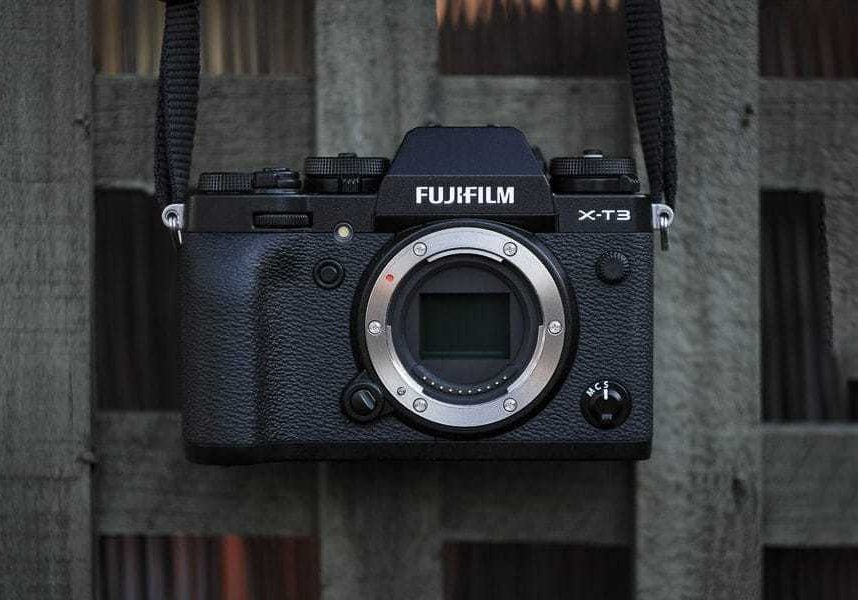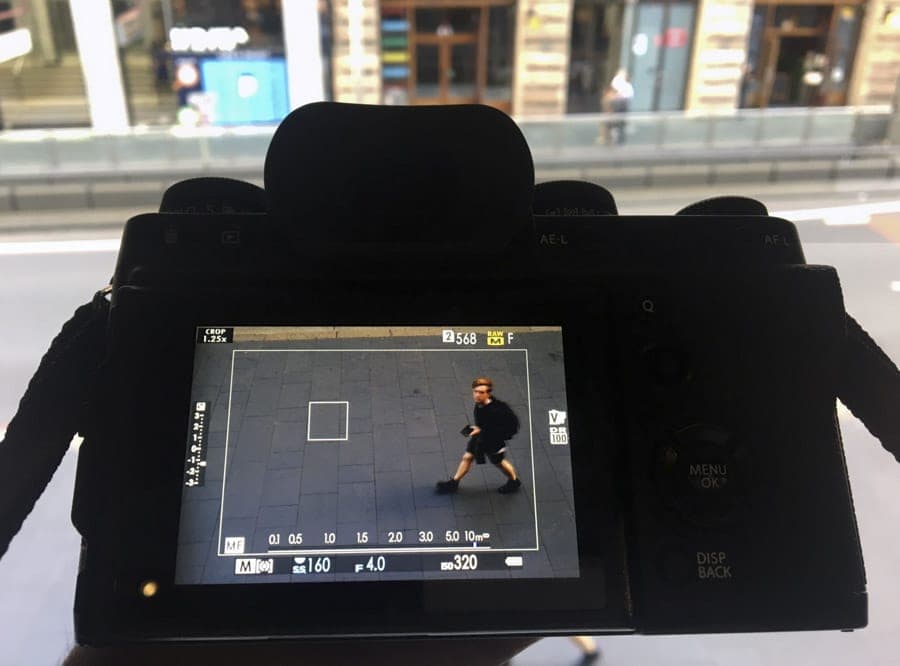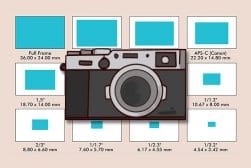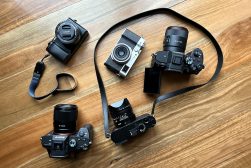
Fujifilm X-T3 Camera Review
A review of the Fujifilm X-T3 mirrorless camera by an experienced travel and documentary photographer. Should you upgrade? Read on to find out!
This is a guest Fujfilm X-T3 review by travel and documentary photographer Bhagi Siva.
This is the age of overwhelmed photographers. Once, announcements of new camera gear were thrilling, with photographers holding their breath in anticipation of new specs. Now, gear releases feel like a monthly routine. New camera, new lens, same old stress over maxing out your credit card.
When it comes to Fujifilm, I wasn’t tempted to upgrade any further after buying the Fujifilm X-T2. It wasn’t clear what I would gain by upgrading when I already had what I needed. Many of my photography buddies felt the same way.
But the excitement of touching a brand-new camera is unparalleled, so I said yes when I was asked to review the new Fujifilm X-T3 once it hit the market. However frequent new cameras have become, companies like Fujifilm who excel in the art of camera-making don’t seem to stop offering surprises.
I’m Bhagi Siva, a travel and documentary photographer based in Australia. I currently use Fujifilm and I love its photography systems. Since I’ve preferred Fujifilm for years, my views might be biased, as they are whenever we choose one thing over another. Still, I’ve tried my best to review this camera impartially.
This review is intended for photographers who are already using the Fujifilm X-T2 or a similar Fujifilm system. It’s not a dedicated Fujifilm X-T3 vs X-T2 review per se, but I do make frequent comparisons throughout.
Fujifilm X-T3 Review | Build & Ergonomics
When I took the camera out of the box, I double-checked to confirm that I was holding a Fujifilm X-T3 and not the Fujifilm X-T2. There didn’t seem to be any difference, except that the Fujifilm X-T3 is made in China instead of Japan. The advantage of this is that the price-point is lower, helping you to save for the next lens.
In the end, it’s the same technology, same company, and same warranty, and I don’t see any reason to debate the manufacturing country here.
The Fujifilm X-T3 has incorporated some changes: for example, it has a touch-sensitive LCD screen. I’m not a big fan of this feature after my experience with the Fujifilm X-E3, where accidental touches led to missed opportunities. Fortunately, you can turn off the touch-screen feature.
Another change from the Fujifilm X-T2 is that the Fujifilm X-T3 viewfinder has a higher resolution: 3.69 vs. 2.36 million dots. This is a real upgrade, making it a pleasure to look through the viewfinder. I especially love this feature because I often check my images through the viewfinder, which is great in bright environments.
Fujifilm X-T3 | What’s new and exciting?

Sensor and Processor
These two, along with auto-focus, are the most important of any camera upgrades. These specifications are where your hard-earned money should go.
The Fujifilm X-T3 has the new X-Trans IV sensor, compared to the X-Trans III of the previous models. This sensor has a technology called backside illumination, which, put simply, increases the dynamic range of the camera.
The Fujifilm X-T3 boasts a new Quad Core X Processor 4, which is almost three times faster than the previous model.
The X-T3 performed very well in high-contrast situations, saving me a lot of time post-processing later on. These improvements alone have significantly increased the usability of the camera in any situation.

Autofocus
Like its predecessors, the Fujifilm X-T3 uses a hybrid auto-focus system, a feature that is highly regarded by many photography tech-gurus. The difference this time is the Fujifilm X-T3’s almost 1.5x faster focus speed with increased phase detection points that now cover the entire frame, plus pixels with increased low-light sensitivity.
These features are very important in my photography, as I work often in low-light situations, particularly during my travels in rural areas. I enjoy low-light situations as they are the most challenging, and they give a lot of opportunity to explore and learn your camera’s limits.
I cover a lot of fast-paced festival scenes during my travel, so the availability of the 11 frame-per-second burst on mechanical shutter mode and the whopping 30fps in electronic shutter mode are a god-send.
Just because of these sensor and processor improvements, we can confidently conclude that Fujifilm X-T3 is a next-level camera compared to its predecessor, and there is a genuine reason to upgrade.
I tend to be a ‘non-photographer’ when it comes to family events. I usually put the system into JPEG mode and activate eye-and face-detection modes, so that whoever picks up my camera can take pictures of people effortlessly.
In the Fujifilm X-T3 these systems are now improved, and my uncle can capture more smiling faces.
Rangefinder-like + Pre-capture mode + Sports finder = Henri Cartier-Bresson moments
When the Fujifilm X-T3 was announced, a couple of things caught my attention immediately.
When using the electronic shutter mode, the camera starts to capture images when you half-press the shutter button and will save the last image that was captured by the time the shutter is fully depressed.
Also, like rangefinder cameras such as the Fujifilm X-Pro 2 (reviewed here) where there are no blackouts, Fujifilm X-T3 has a new feature called blackout-free live view in electronic shutter mode.
When shooting at a high fps, one can enjoy uninterrupted live view, which means that the chance of missing a split-second moment is now minimised.
In the new sports finder mode where the sensor is cropped to about 1.25x (reducing the megapixels to 16.6 from 26.1), the outside of the viewfinder acts in a rangefinder fashion so you can anticipate the entry of an athlete or a pedestrian to better plan the when to click the shutter.
Combined, these features give you a perfect workhorse for sports and street photographers. Nail those decisive moments!

Film Simulations
For me Fujifilm is all about its film profiles and the integrated film simulations in its cameras. When I chose to change to Fujifilm, that was one of the top three reasons. I tend to work using Classic Chrome mode, or the new Acros mode in black and white, as these give me a great baseline for post-processing.
Of particular note, Fujifilm has introduced a feature where you can toggle different tones for the Acros black and white photos, making them warmer or cooler to fit your style. This is a great feature for JPEG street or portrait shooters.
Fujifilm also introduced a new simulation called Eterna in its Fujifilm X-H1 (reviewed here) which is now available in the Fujifilm X-T3 too. It was aimed more towards videographers who prefer a more muted profile for post-processing. I’m planning to use it for still photography as well.
If you’re someone who shoots JPEGs, it is always wise to go through the simulations and understand them well, as not all effects will work in every scene. I almost always use RAW, giving me freedom to add the required simulation later on.

Various film simulations offered by the Fujifilm X-T3
Image Quality: A perspective on ISO performance
Newer cameras have improved a lot in recent years across all brands, and Fujifilm is no exception.
Noise levels are controlled very well even at high ISOs, and even when you slide up the exposure by two values in post-processing the files still have minimal noise levels.

Fujifilm X-T3 RAW file pushed two stops using Adobe Lightroom.
Not many of us print banner-boards from our photos. I rarely ever pixel peep; with millions of photos being produced every minute, there’s not enough time for that.
Having said this, there are elements of an image other than the 100% crop that can adversely affect the final look of a photo. If one single feature is most responsible for image quality, which in turn depends on the quality of the camera, it would beyond doubt be the noise level.
Fujifilm X-T3 | What’s not so exciting

Battery Life: The same old story.
Both the Fujifilm X-T3 and X-T2 use the improved NP-126S battery. According to the specs, the new battery that arrived with the Fujifilm X-T3 was expected to take around 390 shots per charge, 50 shots more than its predecessor… but the one that came with my review unit drained pretty quickly.
I feel it could be an issue with just that battery, as I never had any issues so far with the NP-126S. It’s not a major problem for me, as I usually carry around 6-7 batteries at a time during my travels. I’d definitely recommend to get an extra battery or two until Fujifilm sorts this out.
No IBIS? No Way!
I survived almost 10 years without IBIS. I never bothered with it, thinking it wouldn’t make much difference because I knew it wouldn’t suddenly make all of my low-light photos razor-sharp. However, as I found out later, that technology is there for a reason.
When I tried Fujifilm X-H1 I noticed a difference when using it with a lens without optical image stabilisation. I found relatively more keepers when reviewing my images.
I didn’t want to upgrade then and there, as I seriously hoped that the Fujifilm X-T3 would boast IBIS, making it one hell of a camera.
Well, now I’m left hoping the Fujifilm X-T4 will have it! I can survive another 10 years without it, but will I refuse it if Fujifilm makes it available before then? Nope!
Fujifilm X-T3 Review | Conclusion

Is the Fujifilm X-T3 an interesting camera? Yes, by all means.
Is it the perfect package? No, until the last cell of the engineer’s brain has been used, no camera will ever be perfect.
Will I upgrade? Yes, if I haven’t already put most of my savings towards a home theatre system.
Will it get even better? Yes, by around 2-3 times. Have you heard of firmware and Fujifilm? If not, you should read about it ;-)
Should you wait? Can you, for another 3 years?!














